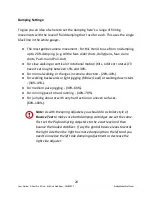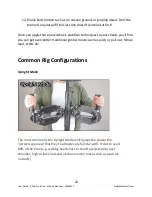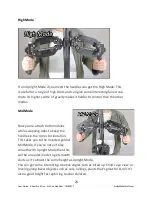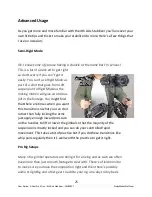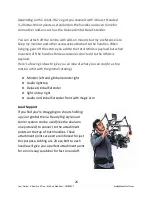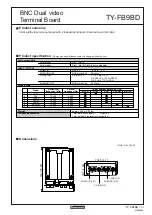
In other words,
●
the firmest end
allows me enough control to frame the shot easier at the
expense of more vertical movement in the footage and;
●
the softest end
has the potential to give you a shot that looks ‘like it’s on
rails’ but until you master it you likely find it too hard to control and you’ll
lose your framing easily - It usually takes some practice with the rig to
master using the Glider Pro 3 Duo at this level - but don’t despair too much
since if a guy like me with a bung knee can do it then you can too!
Ok, sensai, show me ‘the way’!
Holding your stabilizer with a soft touch
Before you start testing you first need to perfect your grip technique.
Many of us that come from using rigid dual handles are used to operating with
the dual handle ‘power grip of death’ ;-)
The biggest key to transitioning to the Glider Pro 3 Duo 4th axis is to relax that
strong grip and start using
‘soft hands’
instead. There’s an art to ‘soft hands’ so
please read on?
The reason this is so important is that your Duo is truly a dynamic system and
what you want to do is eliminate any inward or outward pressure on this dynamic
system. It may be hard to ‘un-learn’ the techniques you’ve learnt but the silky
smooth footage you get will be worth it!
1. The first step is to hold your Duo and place your hands so that the lip at the
top of the handles sits on your hand and bares the majority of the weight.
13
User Guide - Glider Pro 3 Duo - 4th Axis Stabilizer - 20180917 ScottyMakesStuff.com





















